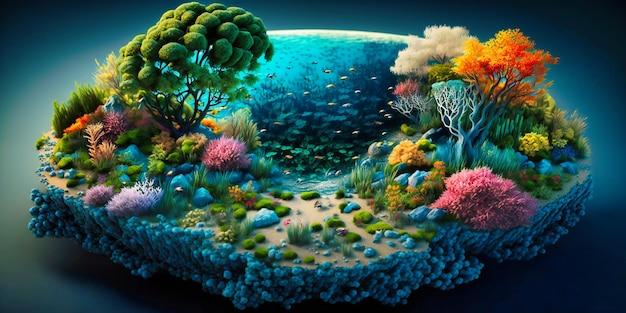Welcome to our blog post on the fascinating question of whether hair is living or nonliving. When we think about the concept of “living,” we often associate it with plants, animals, and humans. But what about hair? Is it just dead cells hanging from our heads or does it possess some form of life?
In this article, we will delve into the nature of hair and explore whether it can be considered as a living entity. We will also touch upon related topics, such as the characteristics of living things, the factors that define an ecosystem, and even some interesting facts about nonliving things in the ocean ecosystem.
So, if you’ve ever wondered about the true nature of hair and its place in the living world, grab a cup of coffee, sit back, and let’s dive into this intriguing exploration!

Is Hair Alive or Dead?
Or perhaps the more philosophically inclined might ask, “Is hair living or nonliving?” It’s a question that has left many scratching their heads (no pun intended) in confusion. After all, hair seems to grow and change just like any other living thing. But let’s dive into the science behind it all and settle this hairy debate once and for all.
The Anatomy of Hair
To understand whether hair is living or nonliving, we need to start by examining its structure. Hair is composed of a protein called keratin, which is also found in our nails and skin. It grows from follicles located beneath the scalp, where special cells divide and multiply to produce new hair cells. These cells are pushed upward, elongating the hair shaft in the process.
The Living Follicle
While hair itself is made up of dead cells, the follicle from which it grows is very much alive. The hair follicle is connected to a network of blood vessels that supply it with oxygen, nutrients, and hormones. These blood vessels help nourish the cells within the follicle and facilitate hair growth. So, in a way, the hair follicle could be considered the life force behind our hair.
The Life Cycle of Hair
Like all living things, hair goes through a life cycle. The growth phase, known as anagen, is when hair actively grows and can last for several years. This is followed by the resting phase, or telogen, which lasts for a few months. After the resting phase, the old hair is shed, and a new hair takes its place. This cycle repeats itself throughout our lives.
Hair’s Resilience
Though hair may be nonliving, it can certainly endure quite a lot. From dyeing and styling to weathering the elements, our hair can withstand a fair share of damage. It’s like the superhero of our bodies, always ready to take on whatever we throw at it. So, while our individual hair strands may not be living, they certainly have a life of their own.
So, there you have it. Hair itself is nonliving, composed of dead cells and proteins. Yet, it owes its growth and resilience to the living hair follicles from which it originates. So, the next time someone asks you if hair is alive or dead, you can confidently tell them that it’s a bit of both. But let’s not quibble over technicalities. After all, life isn’t always black and white – sometimes it’s a fabulous shade of hair dye.

FAQ: Is hair living or nonliving?
Is Hair Living or Nonliving: Answering all your Burning Questions
Chances are, you’ve stared at your tresses for hours on end, marveling at their lusciousness or contemplating their unruliness. But have you ever wondered, is hair living or nonliving? Well, you’re in for a treat! We’ve gathered the most frequently asked questions about hair’s status among the living, and we’re here to shed some light on the matter. So, grab a cup of coffee, sit back, and let’s dive into this hairy adventure together!
Is a Fingernail Living or Nonliving
Ah, the eternal question that keeps us up at night. Is a fingernail alive? Well, technically, your fingernail itself is nonliving, but the tissue beneath it, known as the matrix, is where the magic happens. The matrix is responsible for producing new cells that eventually form your visible nail. So while your fingernail may not have a pulse or start tap-dancing, there’s a living party happening just beneath the surface!
What are the Two Factors of an Ecosystem
Now that we’ve cleared up the mysteries of fingernails, let’s talk ecosystems. An ecosystem is a delicate web of life, where living organisms interact with each other and their environment. These interactions depend on two main factors: biotic and abiotic. Biotic factors include all living things like plants, animals, fungi, and bacteria, which constantly buzz around, bringing life to the party. On the other hand, abiotic factors encompass the nonliving elements such as temperature, sunlight, air, water, and even the disco lights that determine the energy flow within the ecosystem. So, when it comes to ecosystems, it takes both the living and nonliving to boogie together!
What are Some Nonliving Things in the Ocean Ecosystem
Ah, the vast ocean, a world of wonder where marine creatures swim gleefully and mysterious Atlantis lurks beneath the waves. But what about the nonliving party crashers in this aquatic realm? Here are 10 non-living things that call the ocean home:
- Seashells: These pretty shells may have once been part of a living organism, but they’ve shed their living status long ago.
- Coral Reefs: While they are bustling with life, coral reefs themselves are formed by the accumulation of the skeletons of tiny marine critters called coral polyps.
- Sunlight: The ocean wouldn’t be the same without the sun’s rays piercing through the water and illuminating the depths.
- Ocean Currents: These mighty flows of water are driven by factors like wind, temperature, and the rotation of the Earth.
- Sand: Endlessly shifting and ruthless in its ability to find its way into your beach bag, sand is a fundamental nonliving component of the ocean landscape.
- Shipwrecks: These silent sentinels are remnants of human activity, reminding us that the ocean has seen its fair share of adventures.
- Salt: The ocean’s saltiness can’t be overlooked. It’s like having an under-the-sea seasoning party!
- Rocks: Whether they’re forming the seafloor or creating mesmerizing underwater landscapes, rocks add character to the ocean ecosystem.
- Plastic Debris: Sadly, human-made plastic waste has become an unwelcome guest in the ocean, wreaking havoc on marine life.
- Treasure: Okay, we might be indulging in a dose of romanticism here, but who knows what hidden treasures are waiting to be discovered in the depths of the ocean?
What are 10 Non-living Things in the Ocean
We’ve already dived into the world of non-living things in the ocean ecosystem, but let’s take a closer look at 10 more fascinating non-living entities that make the ocean what it is:
- Volcanic Seamounts: These underwater mountains are formed by volcanic activity and adorn the ocean floor like jewels.
- Icebergs: While they may originate on land, icebergs drift across the ocean, eventually melting and merging with the mighty waters.
- Sound Waves: Just like Ariel, the Little Mermaid, ocean creatures rely on sound waves for communication, navigation, and even finding a mate.
- Phytoplankton: Wait, what? Phytoplankton is alive, you say? Well, technically, they are microscopic plants. But for the sake of this discussion, let’s remember that although they’re biotic, they’re not easily spotted with the naked eye.
- Underwater Caves: These mysterious caverns are sculpted by the relentless power of the ocean, creating otherworldly habitats.
- Seaweed: From sushi rolls to beachside tangles, seaweed adds a touch of charm to the ocean’s nonliving elements.
- Tidal Waves: Surf’s up! These powerful waves might give thrill-seekers an adrenaline rush, but they’re not exactly alive.
- Whirlpools: These swirling phenomena might seem like magical vortexes, but they’re simply the result of water currents doing their thing.
- Sponge: In the ocean, you’ll find both the living sponge (a mesmerizing creature) and household sponges (inanimate kitchen heroes).
- Deep-Sea Vents: These underwater chimneys release mineral-rich water and create unique habitats for extremophile organisms. The vents themselves, however, remain nonliving.
So, Is Hair Living or Nonliving
Drumroll, please! Hair, my friends, is non-living. While hair grows from living follicles in our scalps, once it emerges, it’s essentially a collection of protein strands devoid of life’s spark. So, the next time you’re having a lively conversation with your hairbrush, just remember that your luscious locks aren’t enjoying the banter quite as much as you are!
And there you have it, folks! We’ve traversed the depths of the ocean and the mysteries of fingernails, all while unraveling the enigma of hair’s living status. Life, it seems, comes in all shapes and forms, whether it be swimming, floating, or quietly resting on our heads.
